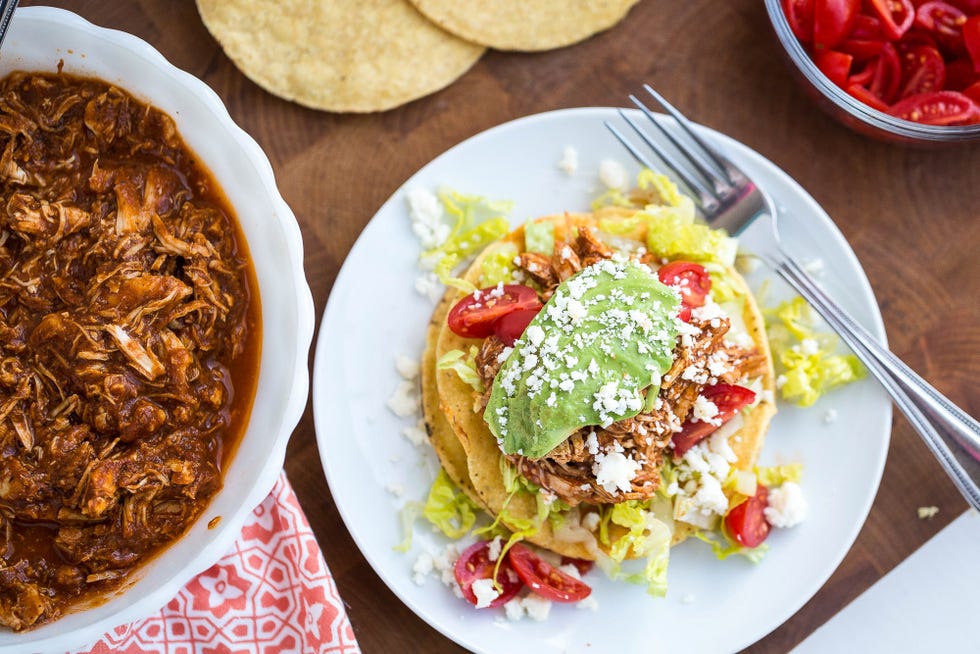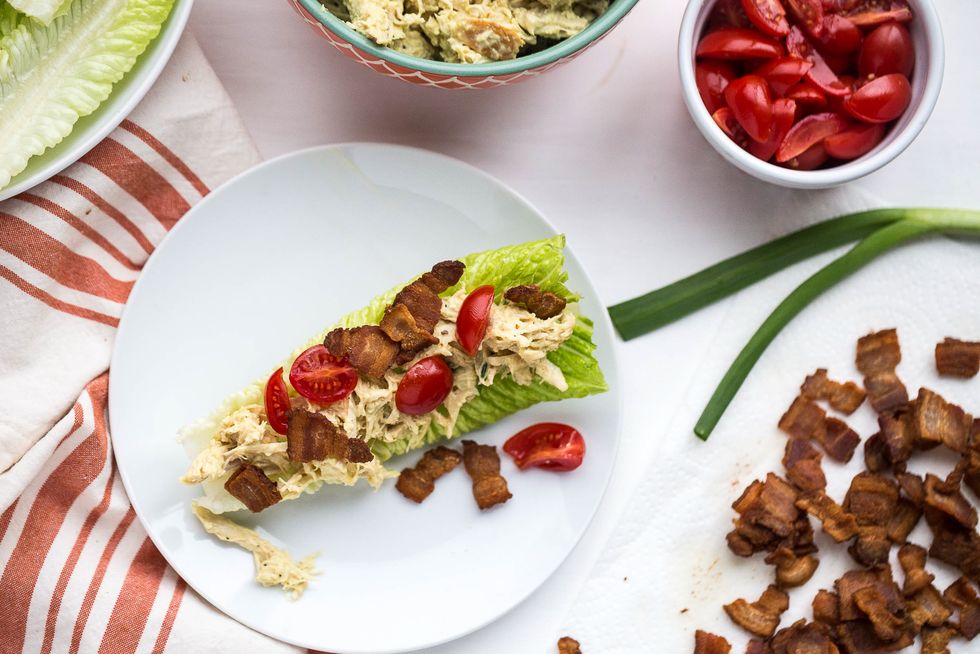Cooking chicken breast in a pressure cooker is a game changer. This method yields incredibly moist, tender and flavorful chicken in a fraction of the time it would take using traditional cooking techniques. But to get the best results, it’s important to understand how long to pressure cook chicken breasts depending on whether they are fresh, frozen, bone-in or boneless.
In this article, I’ll provide a complete guide to pressure cooking times for chicken breast along with tips for preparing and seasoning chicken, releasing pressure, checking doneness and more. Follow these simple steps and you’ll be enjoying juicy, delicious chicken breast in no time!
Pressure Cooking Times for Chicken Breast
The cooking time for chicken breast in a pressure cooker depends on a few factors
- Boneless vs Bone-In – Boneless breasts cook faster than bone-in.
- Thickness – The thickness of the breasts will impact overall cooking time.
- Fresh vs Frozen – Frozen chicken takes longer to cook through.
Here are general pressure cooking time guidelines
- Fresh, boneless chicken breast: 6-8 minutes
- Fresh, bone-in chicken breast: 8-10 minutes
- Frozen, boneless chicken breast: 10-12 minutes
- Frozen, bone-in chicken breast: 12-15 minutes
The times above are for chicken breasts ranging from 1-2 inches thick. For thinner breasts under 1 inch, you may be able to deduct 1-2 minutes. For thicker breasts over 2 inches, you may need to add 1-2 minutes.
You want the internal temperature to reach 165°F. If after cooking the recommended time chicken isn’t quite done, secure lid and cook for a few minutes longer.
Preparing Chicken Breasts for the Pressure Cooker
To ensure your chicken breasts come out tender and juicy, follow these preparation tips:
-
Trim excess fat & pound: Trim any excess fat from breasts and pound them to an even thickness using a meat mallet. This promotes even cooking.
-
Season generously: Season chicken all over with spices and herbs of your choice. Salt, pepper, paprika, garlic powder, oregano and chili powder are all great options.
-
Marinate (optional): For extra flavor, marinate chicken for 30 min up to overnight in a marinade of your choice.
-
Use cooking liquid: Add 1 cup broth, water, wine or juice to pressure cooker before adding chicken. This provides moisture.
-
Don’t overcrowd: Cook chicken in a single layer, not stacking on top of each other.
Following these tips sets you up for tender, flavorful chicken every time!
Step-by-Step Guide to Pressure Cooking Chicken Breasts
-
Add liquid to pot: Add 1 cup cooking liquid like broth, water, wine or juice.
-
Insert trivet: Place trivet or steamer basket in bottom of pot.
-
Place chicken: Layer seasoned chicken breasts on trivet in a single layer.
-
Secure lid: Lock the lid in place and ensure pressure valve is set to “sealing.”
-
Select setting: Choose manual/pressure cook and adjust time based on above guidelines.
-
Allow natural release: When done, let pressure release naturally for 5-10 minutes before quick releasing remaining pressure.
-
Check doneness: Breasts should reach 165°F internally. If needed, secure lid and cook for a few more minutes.
-
Rest before serving: Let chicken rest for 5 minutes before slicing for perfectly juicy results.
And that’s it – with these simple steps you’ll have delicious pressure cooked chicken breast ready in half the time!
Pressure Cooker Chicken Breast Mistakes to Avoid
While pressure cooking chicken breasts is easy, there are a few common mistakes to be aware of:
-
Not adding liquid – The liquid creates steam which is necessary for pressure cooking. Don’t skip this step!
-
Overcrowding – Chicken needs room to cook evenly. Only cook breasts in a single layer.
-
Quick releasing pressure – Letting pressure release naturally keeps chicken moist. Avoid quick releasing.
-
Undercooking – Stick to recommended cook times based on thickness and whether frozen. Undercooked chicken is unsafe.
-
Not resting chicken – Letting chicken rest after cooking allows juices to redistribute so meat stays juicy.
-
Using wrong pressure setting – Make sure to use high pressure setting, not low or medium.
Avoid these mistakes and you’ll have perfectly cooked chicken breast every time!
Tips for Extra Juicy, Flavorful Chicken Breasts
Beyond proper cook times, there are some additional tips to ensure your pressure cooked chicken breasts are extra juicy and packed with flavor:
-
Brine chicken first – Soaking chicken in a saltwater brine adds moisture and seasoning.
-
Use flavorful marinades – Marinating chicken before cooking infuses it with lots of extra flavor.
-
Cook with aromatics – Add aromatics like garlic, onion, herbs to cooking liquid for flavor infusion.
-
Use juices or wine – Cooking with juices like pineapple or wine adds sweetness and moisture.
-
Shred for salads/tacos – Shred chicken and mix with a bit of the cooking liquid for juicy texture.
-
Keep cooking liquid – Save cooking liquid to make flavorful broth or sauce for chicken.
With these useful tips, your pressure cooked chicken will be a new favorite meal!
Checking Doneness of Pressure Cooked Chicken Breasts
The best way to ensure your chicken breasts are fully cooked through after pressure cooking is to use an instant read thermometer. Chicken is safe to eat once it reaches an internal temperature of 165°F.
If thermometer reads below 165°F, simply place lid back on for a few minutes until chicken finishes cooking.
Signs chicken is done without thermometer:
- Meat is opaque throughout
- Juices run clear not pink when pierced
- Meat easily shreds with forks
If unsure, cut into thickest part of breast to check inside is cooked through without any raw pink areas.
Following recommended cook times yields safely cooked chicken, but using a thermometer guarantees doneness.
Releasing Pressure for Chicken Breasts
After pressure cooking is complete, there are two ways to release pressure:
Natural release: Allow pressure to come down naturally over 5-10 minutes before doing a quick release to release any remaining steam. This is best for chicken breasts to keep them extra moist and tender.
Quick release: Manually release the pressure immediately by turning the valve. Quick releasing can result in slightly drier chicken.
For most tender, juicy results, a natural release is recommended. However, if you’re in a rush, quick release still yields delicious chicken breast.
Storing and Freezing Leftover Chicken Breasts
Chicken breasts will keep refrigerated for 3-4 days. For longer storage, freeze chicken breasts:
-
Cool chicken completely before freezing
-
Portion chicken into freezer bags or airtight containers
-
Remove as much air as possible
-
Label bags with contents and date
-
Freeze for up to 3-4 months
To use frozen chicken, thaw overnight in fridge or defrost in microwave until ready to use.
Enjoy leftover chicken in stir fries, tacos, salads, soups and more!
Delicious Ways to Use Pressure Cooked Chicken Breasts
Pressure cooked chicken breast is endlessly versatile. Here are some of my favorite ways to use juicy, tender chicken breasts:
- Chicken Caesar salad
- Chicken & veggie stir fry
- Chicken alfredo with zucchini noodles
- BBQ chicken sandwiches or wraps
- Buffalo chicken dip or pizza
- Chicken tortilla soup
- Chicken enchiladas or fajitas
- Chicken noodle or rice soup
- Chicken pot pie or casserole
The possibilities are endless! Having pre-cooked chicken breast ready makes assembling healthy meals so quick and easy.
Pressure cooking chicken breasts results in incredibly tender, juicy and delicious chicken in a fraction of the normal cook time. Follow the guidelines provided for cook times based on frozen or fresh and bone-in or boneless. Allowing a natural release, proper resting time and using a thermometer guarantees perfectly cooked chicken every time.
Flavor chicken further by brining, marinating or cooking with aromatics. Then use your cooked chicken in salads, sandwiches, stir fries – whatever you crave! In no time, you’ll be whipping up incredible chicken meals with ease using your pressure cooker.

2 – BLT Chicken Salad Lettuce Cups
Did you know you can have these lettuce cups prepped in the time it takes to cook a package of bacon? Truth. Also, I like to find any excuse to work bacon into a recipe.

1 – Red Curry Chicken & Carrot Bowl
This will probably be the fastest curry you’ll ever make. Honest. Just grab some red curry paste—another awesome shortcut—and toss it in a skillet with the chicken and a few other ingredients. Serve it over some hot jasmine rice.

Instant Pot Chicken Breast–Tender, Juicy, and Perfectly Cooked
FAQ
How long will it take to cook chicken in a pressure cooker?
I’ve cooked the whole chicken 6 minutes per pound and it came out fully cooked.Nov 24, 2023
How long do I pressure can chicken breast?
Process filled jars in a pressure canner at 10 pounds pressure 20 minutes for pints and 25 minutes for quarts, adjusting for altitude, according to your …
How long do you cook boneless chicken breast in a pressure cooker?
Set to HIGH pressure for 10 minutes. For fresh chicken, it will take about 10 minutes to come to pressure. Expect frozen chicken to take 12 to 15 minutes to come up to pressure. Quick release the pressure, remove, and serve or use for future use.
How long to pressure cook chicken breast reddit?
For thawed chicken breast, cook for 11-12 minutes, let it natural release for at least 5-10 minutes. I’ve always had very good results, except for one time when I was in a hurry and tried to release the pressure too early – so I’m guessing that’s your issue.
